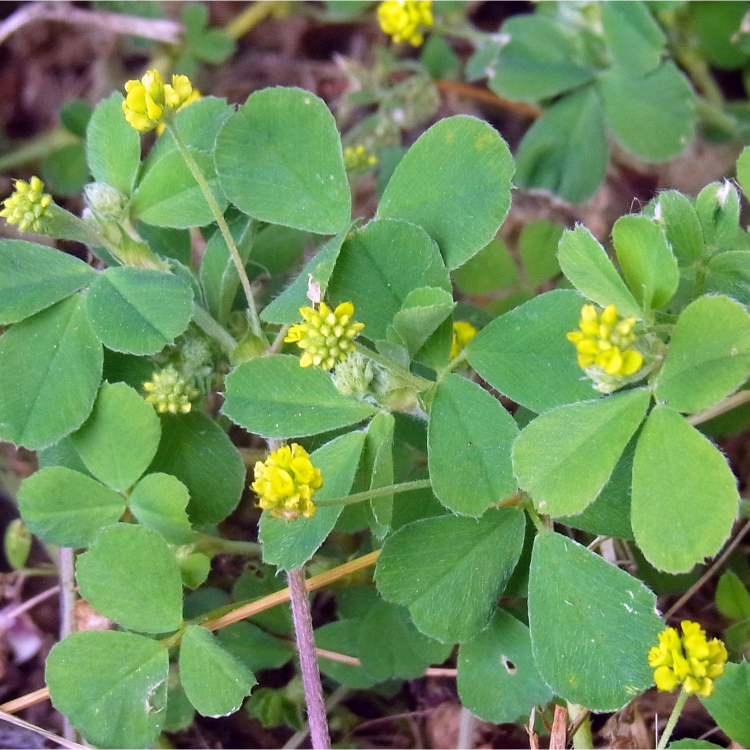It’s March, time for our favorite Irish holiday, St. Patrick’s Day!
Your childhood paranoia of getting pinched likely has you in the habit of wearing green on March 17th. Perhaps you even decide to elevate the tradition by pinning a sprig of Shamrock to your shirt. But before you do, I have a question for you…
What species of plant will you be using?
Will it be the clover, wood sorrel, or black medic? This is the ultimate botanical debate that’s been around for hundreds of years. Shall we do our best to settle it now? Let’s get to it!
Why the Shamrock is a sham…
Did you know the name Shamrock doesn’t represent any particular plant? That is, there are no species of plant with this name. At least, not one we agree on.
The name Shamrock refers to the 3-lobed Irish symbol we know and love. It’s closely associated with Ireland’s patron saint, Saint Patrick. Legend has it, he presented a tri-lobed green leaf as a symbol of the Holy Trinity - the Father, the Son, and the Holy Ghost.
Whether or not this is true, we may never know. But the Irish continue to depict Saint Patrick as holding a Shamrock in his hand.
And there I did it again. I used the word Shamrock. How could Saint Patrick be holding a Shamrock when there is no such thing as a plant called Shamrock? Well, in a roundabout way, it does exist. But more as a collective term for a handful of trifoliate plant species. Here are the leading contenders:
1) Clover:
Trifolium dubium, yellow or lesser clover
Trifolium repans, white clover
Trifolium pratense, red clover

Clover, one possible Shamrock
2) Wood Sorrel:
Oxalis acetosella

Wood Sorrel, Oxalis, another possible Shamrock
3) Black Medic:
Medicago lupulina

Image credit: By Lawn Weeds - Black Medic, CC BY 2.0, https://commons.wikimedia.org/...
So which is it? There are a few ways to debate this.
Method #1:
First is to scour historical references for the original or most valid use of the term Shamrock. When we do this, we can find references for any one of these plants as the real Shamrock. But then we have to decide which one to validate. Is it the oldest reference? Is it the most trusted historical figure? And how do we determine who that should be? Personally, I’d rather stay out of that game, as interesting as it is to read the accounts. Declaring a winner based on my favorite historical reference seems far too subjective.
Method #2:
Ask the Irish! According to two separate botanical surveys in Ireland, one in 1883 and another in 1988, the clover wins. By a considerable margin. In particular, it is the yellow or lesser clover, Trifolium dubium, that takes the lead.
And to give you an idea of just how cool the Irish are, here is how they conducted the survey. The survey-organizing botanist asked residents all over Ireland to send in living plant samples of what they believed to be the Shamrock. When they received these living samples, they grew them out until they flowered to ensure their correct botanical identification.
Reading about these live botanical surveys makes me proud of my Irish roots!
Here are the results according to the two surveys:
1893 Shamrock Survey
Trifolium dubium Lesser or yellow clover, 51%
Trifolium repens White clover, 34%
Trifolium pratense Red clover, 6%
Medicago lupulina Black medick, 6%
Oxalis acetosella Wood sorrel, 0%
1988 Shamrock Survey
Trifolium dubium Lesser or yellow clover, 46%
Trifolium repens White clover, 35%
Trifolium pratense Red clover, 4%
Medicago lupulina Black medick, 7%
Oxalis acetosella Wood sorrel, 3%
In summary, most agree that clover is the true embodiment of the Shamrock.
Method #3:
Go with whatever is accessible to you or suits your experience.
If you grew up surrounded by fields of red clover, this might be your Shamrock.
If you were a city kid, a seasonal display of wood sorrel at the grocery market may be your frame of reference. This is valid too.
If you’re a gardener, you may be quite accustomed to pulling black medic out of your front borders. Save a pinch for your lapel, and call it a day.
Because Shamrock is more of a symbol than a particular plant species, it allows you to pick the most accessible or familiar trifoliate species and get on with the festivities.
Do you have an opinion? Post a comment below. I’d love to hear what you think the real Shamrock is!
Stay tuned for the St Patrick’s Day Special Part 2: Luck Comes in Threes!, coming next week.
